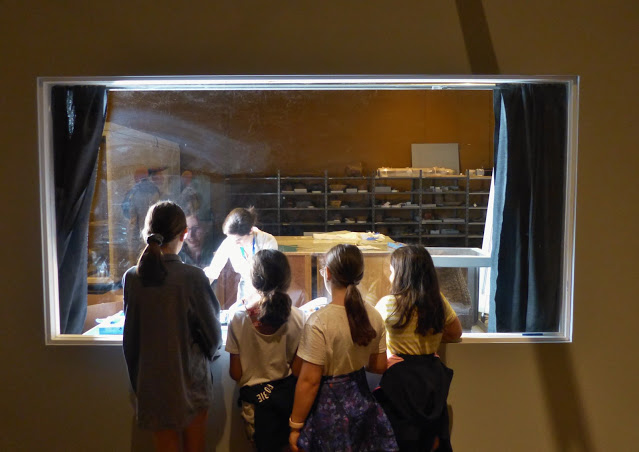Connections Revisited
The original version of "Connections" was published in 2020. Having lived with an altered work environment for a year, I've since found the occasion to reflect on my original piece:
In May of 2019, I traveled to Chicago by car to join with
hundreds of others from a worldwide community dedicated to the preservation of
natural history collections. Our individual arrivals to the sweltering city
were staggered—as I just checked into the grand Hilton on Michigan Avenue, I
noticed a small group, all donned in the same white lanyards, struggling
through beautifully diverse languages to gush about specimens. The museum
professionals had likely already met during the optional field trip the day
before, or while mingling at the cocktail hour that followed. I felt late to
the party, but I would soon learn that wasn’t so. Many would still be catching
flights from halfway around the world, only joining our large group upon dinner
in the ballroom the next night.
Throughout the long-winded conference, members of the
Society for the Preservation of Natural History Collections piled into taxis
and recklessly made our way to museums across the metropolis; we bumped shoulders
and stopped to chat as we moved about the busy hotel hallways; and embraced the
vastness of the Windy City with its endless pleasures of social life.
 |
| Giddy with excitement, the SPNHC conference allowed me to visit the Field Museum for the first time since I was a child with no thoughts to enter into the museum field once I would reach adulthood. |
So much has changed since that year. But underneath our shift to calmer, quieter, more solitudinous surroundings beginning in 2020, I've felt that the greatest lessons I gleaned from that trip still hold true in many of the same ways.
One of the most important, and simple, messages is one of
building connection.
Our collections are diverse, important, and great in number.
As collections workers, we already understand and feel this sentiment as we
work closely with each piece. We connect with a specimen as we learn its
history—whether within the context of the outside world or during its life
within our museums. We grasp at the stories and lessons learned from the study
of these physical representations of life.
 |
| The Field Museum has a robust volunteer force and educational program where real specimens are used during experiences with the public. |
And all of our work--from repairing old taxidermy mounts to transferring catalog records--is done with the hope of further connecting others to these magical, natural wonders. A loon skull, delicate hummingbird egg, or full mount of a moose truly all come back to life in a museum.
Back while on my visit to Chicago, I had spent my last full
day wandering the extensive halls of the Field Museum. I took a much-needed
break from walking through the humbling Halls of the Ancient Americas to snap a
photo of a viewing window, where a conservator worked on archaeological
specimens. Though I didn't butt in on the group of preteen girls with faces
nearly pressed to the glass, all five of us were together mesmerized by that
human interaction with such untouchable objects. As visitors, we were used
to some level of physical separation between us and the specimens.
 |
| Visitors watch on as conservators restore specimens from the Halls of the Ancient Americas. |
Normally, though, I'm on the other side, facilitating moments of connection for others. One of my favorite occasions to interact with visitors has been running into groups of friends, couples, and families as they unintentionally block off the office hallway while staring into our collections storage room. As I approach the human blockade, I field incredible, probing questions from visitors whether they are toddlers or elders. And I listen as many of them open up to me in a miraculous manner—tearing up as they recount stories in nature with a lost loved one, or passionately verbalizing their stance on environmental issues. Those meetings in the hallway become cathartic.
Though it has been some time since I’ve chatted away with visitors in front of taxidermy mounts, I know that that exchange of information and stories has not been lost.
Some days—especially in our new reality—it feels daunting to try and connect people with our collections. Often I am not even at the Museum myself. But why could we not still be successful in our efforts? It's become clear that experiences like those I’ve described are not fully lost when a museum's doors are closed. We really aren't limited by physical space, nor even by our computer's network connection. As long as people still want to connect—to exchange information, share stories, and revel in experiences—we will find a way to make that happen. Deep down, we all crave a connection.